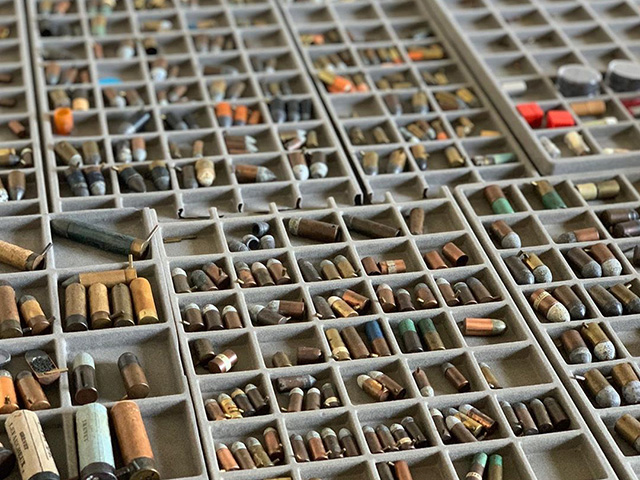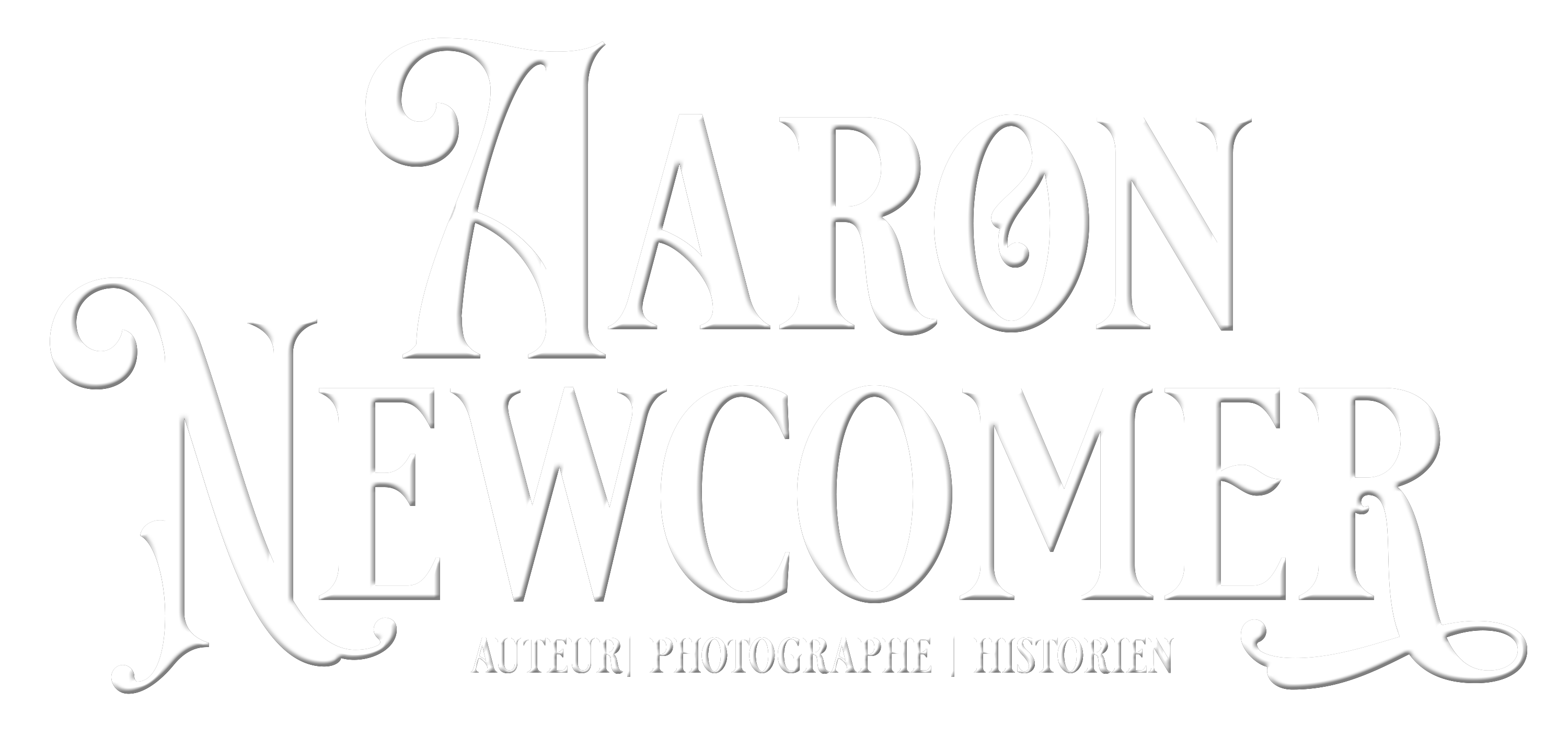
Cartouches à vendre
Cartouches et boîtes à broche

Armes à broche à vendre
Fusils à broche du monde entier

Articles sur armes et cartouches
Pinfire, Pauly, Perrin et plus encore

Dellazoppa Frères était une société de commerce de quincaillerie fondée à Paris, France en 1871 par François et Jean Dellazoppa. L'entreprise a opéré à Paris, Buenos Aires et Bruxelles pendant la fin du 19e et le début du 20e siècle, et a produit une gamme de quincaillerie et de produits connexes, y compris des munitions métalliques telles que des cartouches à broche.
La Hausbieble, également connue sous le nom de «Bible familiale», était une collection de trois bibles en allemand imprimées en Amérique par la famille Saur dans les années 1740-1770. En tant que première bible en langue européenne imprimée en Amérique, la Hausbieble a joué un rôle important pour aider les immigrants allemands à préserver leur patrimoine culturel dans le Nouveau Monde. De plus, elle a joué un rôle dans la guerre d'indépendance américaine, les soldats britanniques utilisant ses pages pour fabriquer des cartouches en papier.

Le système à broche a marqué un tournant dans la technologie des armes à feu, améliorant la sécurité et la fiabilité. Mais qu'est-ce que le système à broche, et pourquoi a-t-il été inventé ? Explorons ses origines et son importance historique.

Le système à broche, inventé par l'armurier français Casimir Lefaucheux au début du XIXe siècle, a introduit un nouveau type de cartouche et de mécanisme de tir pour les armes à feu. De manière caractéristique, ce système utilisait une petite broche saillante sur le côté de la cartouche. Lorsque le marteau de l'arme frappait la broche, cela enflammait la poudre à canon, tirant la balle. Cette approche innovante constituait une nette amélioration par rapport aux armes à feu précédentes, qui reposaient sur de la poudre à canon en vrac et des dispositifs d'allumage séparés tels que les silex ou les capsules à percussion.
Lefaucheux, un inventeur très respecté dans le domaine de la technologie des armes à feu, a apporté plusieurs contributions clés à ce domaine, le système à broche étant l'une de ses plus remarquables. Après avoir breveté le système en France en 1835, il a rapidement gagné en popularité et a été adopté par les fabricants d'armes à feu du monde entier.

H. H. Schleber & Co de Rochester, New York était un fabricant de concentrateurs de plombs enroulés permettant aux chasseurs de tirer sur des canards, des oies, des dindes, des renards et d'autres animaux difficiles à approcher, de plus loin.
Il y avait de nombreux brevets de concentrateurs de plombs dans le monde, et ils avaient tous pour objectif de maintenir les plombs lâchés par un fusil de chasse ensemble plus longtemps avant qu'ils ne commencent à se disperser. Les armes modernes et même certaines armes de cette époque utilisent une méthode appelée choke-boring qui réduit progressivement le diamètre de l'extrémité de la bouche du canon pour obtenir des résultats similaires.
Les cartouches à plombs enroulées brevetées de Schleber étaient conçues pour contenir des plombs dans deux demi-cylindres en étain maintenus ensemble par un fil qui se déroulerait en vol après avoir été tiré. Une fois le fil complètement déroulé, il libérerait les plombs. Ils étaient enroulés avec différentes longueurs de fil correspondant à la distance en yards jusqu'à la cible que vous vouliez atteindre. Certaines critiques de l'époque soulignaient que le chasseur devait être bon pour estimer la distance nécessaire pour choisir correctement la bonne cartouche ; surtout qu'à des distances plus courtes, il s'agirait d'un gros projectile solide jusqu'à ce qu'il se déroule complètement.


Un miroir aux alouettes, était un outil pour aider les chasseurs à attirer les petits oiseaux chanteurs vers leur position pour qu'ils puissent être récoltés.
En 1680, un ancien dictionnaire français mentionnait ces miroirs pour attraper les alouettes et les ortolans. Il les définissait comme :
Un morceau de bois taillé en arche où il y a plusieurs encoches sur lesquelles sont collés de petits miroirs & qui est soutenu par un piquet au milieu duquel il y a un trou pour y mettre une ficelle afin de faire tourner ce miroir, qui est enfoncé dans le sol entre deux feuilles pour attraper des ortolans & principalement des alouettes.

Ces petits oiseaux chanteurs étaient considérés comme un mets délicat et étaient cuits et mangés en entier, en une seule bouchée; tête, os et tout. Les ortolans étaient les plus convoités et leur consommation a été représentée dans les peintures et les médias au fil des siècles comme un acte glouton, presque honteux. La préparation française moderne de cette délicatesse consisterait à utiliser des ortolans capturés vivants et aveuglés ou gardés dans des cages sombres où ils étaient gavés jusqu'à ce qu'ils atteignent deux fois leur taille normale. Ils étaient ensuite noyés et rôtis dans de l'Armagnac, une sorte de brandy de la région de l'Armagnac, dans le sud-ouest de la France.

J'ai récemment acquis un fusil Robert et, bien sûr, j'ai dû trouver autant de livres avec des documents sources originaux que possible. Le premier et le plus unique provient d'un petit livre de 143 pages écrit par le comte de Langel qui se concentre sur divers sujets pertinents pour les chasseurs des années 1830.

I have not come across many advertising posters like this that mention pinfire cartridges so I jumped at the chance to buy this one when it came up for auction. This early color lithograph was printed between 1885 and 1889 and was likely provided to various gunmakers and ironmongers who sold Eley cartridges to the public.
It would have functioned as both an in-store advertisement as well as a quick reference guide to the various types of cartridges and accessories that Eley manufactured, as shown when turning it over.

Here is a patent manuscript by Casimir Lefaucheux. It is French patent number 8955 from 1850. It describes a reusable pinfire shotshell that has a base that unscrews to allow easy reloading. It also pictures a tool to extract the shell from the gun and unscrew it.
By 1850, pinfire shotshells had been on the market for 15 years and people were familiar with these new breech-loading guns. But they were still more expensive than buying a percussion cap and powder used by a muzzle-loading, percussion gun. Shotshells that were able to be reloaded was one solution to this issue. And many manufacturers made metallic shotshells that could be reloaded many times.

This is one of the very few American-made pinfire shotshells. It was patented on 8 February 1870 by William H. Smith of Charlestown, Massachusetts.
The main idea for his improvement was around the safety issues of loading a shotshell that was already primed. He designed the system to allow it to be loaded ahead of time and then primed later when one was ready to use it.

Born into a family of silversmiths and cartridge manufacturers, William Thomas Eley and Charles Eley took over their father’s business upon his death in 1841 and founded W. & C. Eley. They continued making percussion caps and their patented wire cartridges which the company had become well known for.




The story of Italian pinfire guns and cartridges begins in the Kingdom of Sardinia with an order of 5000 Lefaucheux model 1854 revolvers. This first order was placed in 1859 and delivered in 1861 and these guns were referred to as the Corto model. They were pretty similar to the typical Lefaucheux model 1854 revolver except they had a 21% shorter barrel around 123mm long. At the time that these revolvers were ordered and delivered it is thought that the arsenals had not yet started producing their own pinfire cartridges yet so cartridges were likely imported from France or elsewhere as well.

Shortly after these revolvers were ordered, the Kingdom of Italy was formed and a new order was made for another 12,000 revolvers.

During the American Civil War, Rolla, Missouri was a heavily garrisoned town that played a strategic role protecting the terminus of the Southwest Branch of the Pacific Railroad. This section of the railroad branched off the main Pacific Railroad of Missouri 40 miles southwest of St. Louis in Pacific City. It began construction in 1855 and the first train pulled into Rolla on December 22, 1860.


I recently picked up this pair of pinfire pistols designed by Casimir Lefaucheux. I had never seen examples quite like them before and was really excited to get them in. Casimir Lefaucheux was making pistols from the time he took over the Pauly company in 1827 as shown in our recent post on the topic. But these early pistols were much larger and bulkier. In 1833, Lefaucheux was issued a new patent for his fusil à charnière, or hinged gun.

He advertised and promoted the fact that these pistols and rifles were easier to use and safer and better in every way than his earlier Pauly guns, and especially better than other percussion guns of the day. They could shoot 500 rounds without cleaning or even wiping down which was unheard of for typical percussion guns that loaded from the muzzle. Lefaucheux also emphasized that they were easier to take apart and maintain by the average person.

This article will take a look at a horizontal pinfire cartridge that has been unknown for quite some time. For awhile after I acquired it I could not figure out much about its history. But after discussing it with Fede Graziano we were able to get a little better understanding of it. This is the 14.5×48/49R Horizontal Pinfire cartridge and it was manufactured for or by Johann Jacob Peter of Stuttgart, Germany.
 Bonjour, je m'appelle Aaron Newcomer. Je suis collectionneur et chercheur sur les systèmes d'armes à feu à chargement par la culasse du début du 19e siècle, avec un intérêt particulier pour les travaux de Jean Samuel Pauly et Casimir Lefaucheux. Je collectionne les cartouches et les documents liés à ces types d'armes à feu et je mène des recherches sur ces sujets, approfondissant ma compréhension et ma connaissance de ces armes historiques et leur place dans l'évolution de la technologie des armes à feu. Ma collection et mes recherches reflètent mon engagement à préserver et à comprendre l'histoire et les innovations techniques de ces systèmes d'armes à feu anciens.
Bonjour, je m'appelle Aaron Newcomer. Je suis collectionneur et chercheur sur les systèmes d'armes à feu à chargement par la culasse du début du 19e siècle, avec un intérêt particulier pour les travaux de Jean Samuel Pauly et Casimir Lefaucheux. Je collectionne les cartouches et les documents liés à ces types d'armes à feu et je mène des recherches sur ces sujets, approfondissant ma compréhension et ma connaissance de ces armes historiques et leur place dans l'évolution de la technologie des armes à feu. Ma collection et mes recherches reflètent mon engagement à préserver et à comprendre l'histoire et les innovations techniques de ces systèmes d'armes à feu anciens.
